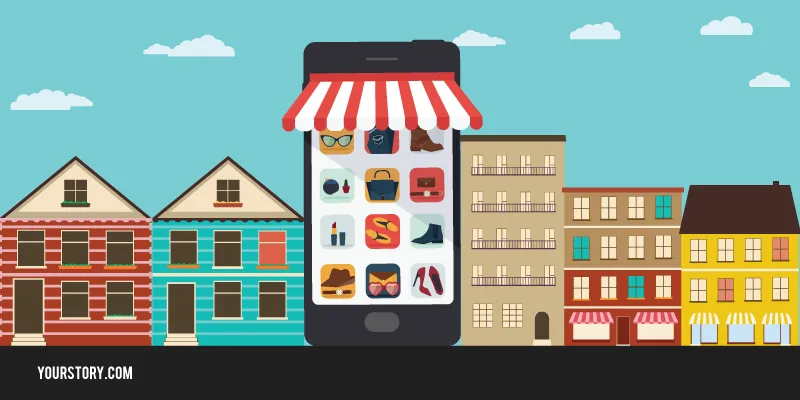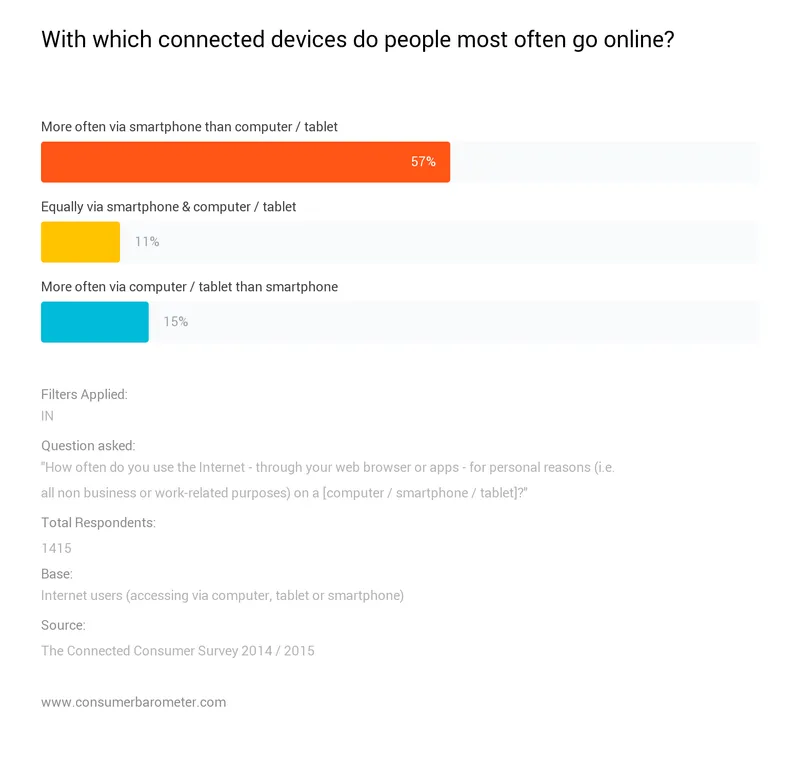App commerce in India – Enabling millions of businesses
The growth of smartphones and tablets has enabled India to leapfrog from the desktop era to a mobile era to a smartphone era very fast. In the past decade, the country witnessed some of the following trends that point towards app commerce as the future:
- Desktop → Mobile → Mobile Internet → Smartphone with Internet.
- Smartphones → Getting cheaper every few months.
- Mobile Internet → Getting cheaper every year.
- Mobile Internet → Getting faster: 2G, 3G, 4G
- Google as home page on desktop → Chat as main app on smartphones.
- 50 per cent of smartphone users not performing searches.
- Commerce moving from cash → online payments.

Proof of love for the Internet

Proof of smart phone usage
Proof of Internet on mobile

Be it the consumer side or the business side, these trends are resulting into changing habits across the table.
Consumer trends
- Getting used to app usage.
- Getting used to chat for communication.
- Accessing information on the mobile.
- Prefer chatting instead of calling.
- App fatigue → Don’t want too many apps for multiple things.
Users tend to download apps that they use frequently, and not the low frequency categories.
Business trends
- Offline businesses seeing online aggregators eat their cake.
- Want to sell online but lack technology.
- Don’t understand e-commerce. Don’t understand mobile.
- Want to be omni-channel – e-presence and e-payments.
- Don’t want to lose money on commission to aggregators.
- Want to build their ‘own’ brand.
They are seeing category after category being disrupted by online startups. Be it product commerce, bus tickets, hotel reservations, movie ticketing, recharges, etc. They realise it’s high time they see the writing on the wall – it’s time to go online and fast.
Challenges for businesses
Businesses see the trend of consumers being on mobile. They want to get on app too but face these challenges:
- Making an app is very expensive.
- Even if budgets permit, they don’t know how to go about it.
- Digital payments are complex to understand and manage.
- Marketing the app is even more expensive.
- Consumers won’t download individual apps for multiple things.
Opportunity
The opportunity lies in bridging the gap between what consumers and businesses want. Businesses want to sell on app because their consumers are on mobile. Consumers want to buy online but their trusted businesses aren’t there yet. And they don’t want to download multiple apps for multiple things.
There are mainly two kinds of businesses:
- Daily commerce businesses: These are businesses that consumers use at a very high frequency. Example groceries, restaurants, canteens, local travel, etc. These businesses don’t have sophisticated booking engines. They want to be online but lack the technology. They depend on repeat business and care about customer retention.
- Long tail businesses: These businesses are used at a lower frequency. Sometimes once in a few years and many times once in a lifetime. Millions of businesses fall in this category. For example, yoga classes, sky diving, guitar lessons, notary services, etc. These businesses care about new customers thanks to the low frequency of repeats. They care about discovery.
Both these business types want to sell on app – but for different reasons. Consumers don’t want to download an app for long tail businesses or a single daily commerce business. There lies the difficulty for businesses to start selling on app.
Solution
The solution is to enable all businesses to start selling on app with a DIY app-commerce ready solution. And allowing consumers to interact with all these businesses on a single app.
It’s important to enable millions of businesses in India with technology that democratises the ability to sell on mobile. This technology is expensive and needs to be spread across millions of businesses for it to be made available en masse.
A new way of commerce
We see a new and better way of commerce going forward. Where the consumer doesn’t spend time to order the daily. Where queues are skipped thanks to better ordering and payment processes. Where payments are digital – with zero to little dependency on cash transactions. Where businesses have access to a lot more data about their consumer and their context. Where businesses are in control. Today they lack the technology to go online but that’s being democratised. Today they lack economies of scale, which can be provided by a platform that enables millions of businesses.
We are at the cusp of a new way of commerce. Every business in India can and will be enabled for app commerce and they’ll have the power that aggregators enjoy – without the associated costs. It’s time to fight on strengths of service rather than lament the lack of technology.








